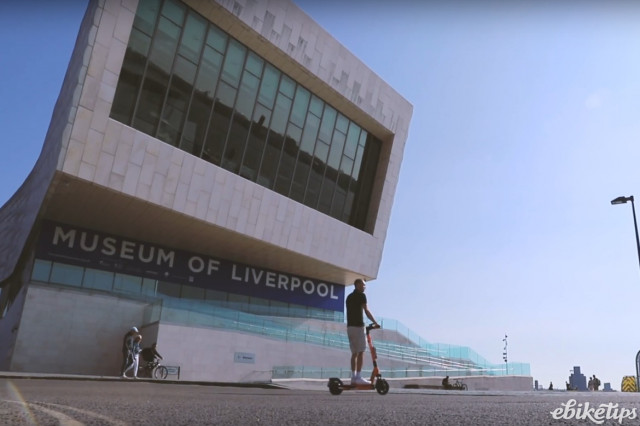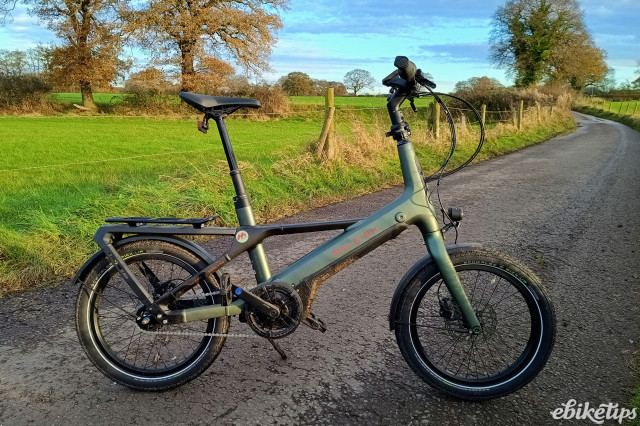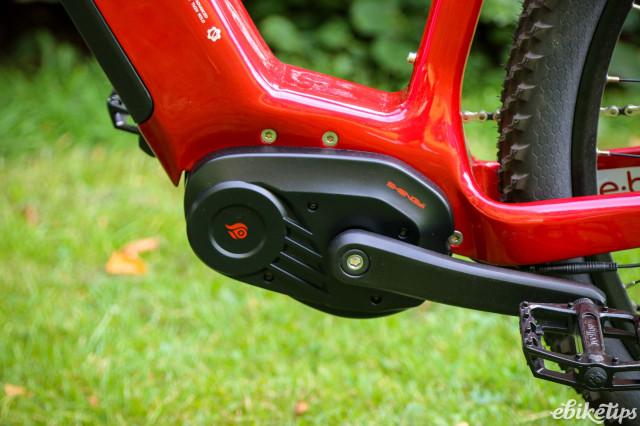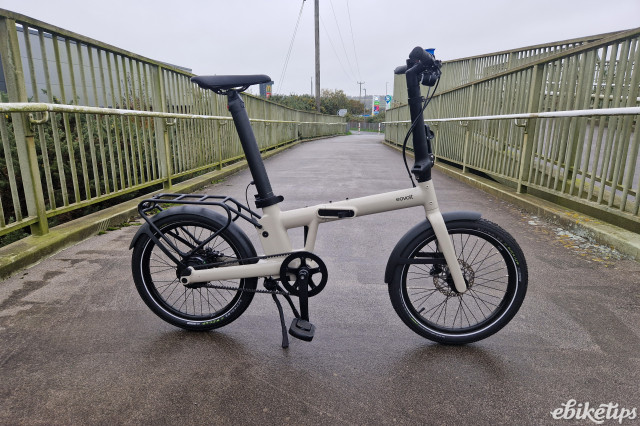A new Transport Bill, introduced in the 2022 Queen’s Speech, will make e-scooters legal through the creation of a low-speed, zero-emission vehicle category. Might this new category cover some other types of light electric vehicle that currently fall between legislative cracks?
The written record of the Queen's Speech quotes Transport Secretary Grant Schapps as saying that legislation is planned, "to allow the government to regulate e-scooters in the 2022–23 session. The government would then be able to stipulate that all e-scooters sold met certain standards concerning speed, power and lights, among other things."
This is pretty much all the detail we have at the moment, so what form might the proposed new law take and might we also see change to promote the use of other types of light electric vehicle?
We recently took a look at the light electric vehicles (other than e-bikes) that you can currently take on the road in the UK. It's clear there is scope to expand this list. Perhaps even more significantly, there is also great potential to streamline how easy it is to get out there on forms of light electric vehicle that are currently under the radar in the UK.
E-scooter trials across the UK have allowed the government to collect evidence and make an informed decision about e-scooters and what other kinds of light electric vehicle, if any, might be permitted or made easier to ride in the future. These trials remain, at the time of writing, the only legal way to ride an e-scooter on public roads and cycle lanes.
It's assumed that it's this evidence that ministers and civil servants are mulling over before they come up with a draft bill. We have also heard of Department for Transport officials visiting a leading UK manufacturer of small electric vehicles - not e-scooters - which suggests that the final law may indeed be casting its net a little wider.
What areas could e-scooter legislation cover?
France recently created a new vehicle category in its traffic code covering 25km/h electric vehicles without pedals. Both e-scooters and light electric mopeds appear to fall into this category. Might something similar be implemented in the UK?
Electric scooters are currently classed as 'powered transporters' in the UK - a category the government says also includes, "Segways, hoverboards, go-peds (combustion engine-powered kick-scooters), powered unicycles, and u-wheels."
In effect they are classed as motor vehicles but ones for which no technical standards exist by which they can be approved for use on the road. The exception is of course the e-scooter trials.
The conditions the government has imposed on these e-scooter trials perhaps give a clue as to what the future law might look like. Current trials allow a motor rating up to 500 watts (250W more than is permitted for e-bikes) with a maximum speed of 15.5mph (the same as for e-bikes) and a maximum vehicle weight of 55kg.
Current motor vehicle categories for light electric vehicles bigger and faster than e-bikes and e-scooters are a huge and complicated mish-mash of European regulations with categories defined by numerous criteria, including how many wheels the vehicle has and whether or not it has a seat. They cover some vehicles that arguably might be better grouped in with e-bikes and others that might be better grouped with e-scooters should a new class of light electric 'powered transporters' be created.
Let's take a look at what areas the legislation could consider for the new class of low speed electric vehicle.
Speed
Raising the 15.5mph assist limit is seen by some as a move that would jeopardise the e-bike's wonderful red tape free, just-get-on-and-pedal-it status. Others believe such a move would accelerate the adoption of e-bikes by making them more competitive when measured against other forms of local transport and would also help e-bikers feel safer and more confident when mixing it with road traffic. As the ebiketips comments section revealed in this story, it's certainly a divisive issue.
There are many small scale studies that try to gauge the safety of e-bikes in various countries and at various speed limits. However, perhaps the most convincing overall picture of current cycling and e-biking safety in the UK is presented in government stats (in table 3 here). Of the 26,468 cyclists reported killed or seriously injured over the period 2015-2020, 85% of incidents involved a much larger motor vehicle with totally derestricted speed (cars, lorries etc) whilst 8% were 'solo' accidents. Less than 2% involved collisions with another cyclist. A fair assumption from this would be that a modest increase from 15mph (20mph is often suggested) for e-bikes would not lead to a massive rise in serious injury and death.
A 20mph assisted limit would also bring e-bikes in line with some current policies on introducing blanket 20mph speed limits in urban areas.
Motor power
Rather less high profile is a potential increase in the 250W motor power rating. With a maximum continuous power rating of up to 500W allowed in the e-scooter trials, legislation could potentially increase motor power limits for e-bikes.
However, a definition of 'continuous rated power' is notoriously difficult to pin down (most e-bike motors' peak power is much higher, but there is no limit set for this peak or how long the motor is able to sustain it before damage occurs).
A better measure of motor power safety may be power to weight ratio or rate of acceleration. Certainly more powerful motors would be welcomed by those who take heavy loads by e-bike or those who live in exceptionally hilly areas.
Weight
There is currently no weight limit for e-bikes but the e-scooter trials limit vehicle weight to 55kg, which seems a reasonable standard for e-bikes too. Certainly very few e-bikes come anywhere close to this limit. And with e-bike standards being applied to small four-wheelers (the UK's EAV being one example) a size limit might be in order too, if only to prevent oversize vehicles on bike lanes.
There are no laws about what weight can be carried on a bike or e-bike but manufacturers often state a maximum advised limit based on the particular design. Advisory rider-plus-cargo weights start at around 100kg, but massively well-built e-cargo bikes like the Tern GSD can handle double that. Current e-scooter trial law stipulates a maximum carrying capacity of 100kg plus physical size limits for the scooter.
Lighting and being seen
It is illegal to cycle or e-bike on a public road after dark without lights and reflectors. Exactly which lights and reflectors, where to fit them and when to light up, is defined by the Road Vehicles Lighting Regulations (RVLR).
Lights are required on trial e-scooters but not on e-bikes (at the point of purchase). It's now relatively easy and cheap to make an e-bike with front and rear lights hardwired to the main battery and efficient modern LED technology also means this shouldn't be a big drain on battery power. There is even an argument for daytime running lights as a safety step. Some e-bikes (like the Riese and Muller Homage) already have this.
Construction and safety standards
E-bikes already have a clear set of standards for manufacturers to follow (EN15194) laying out fairly detailed criteria for both electrical and mechanical parts of the e-bike. Little spoken about, they have been a big factor in ensuring e-bikes are safe and enjoyable to ride and so have been a big part of their enormous recent success.
Such standards are totally lacking for e-scooters in the UK and would be a vital step for their safe introduction - indeed for any type of vehicle the government chose to include in its 'powered transporters' category.
Interestingly, the e-scooter trial legislation includes a stability/handling test which could also be used as a starting point if legalisation of other small personal transport was considered - vehicles such as segways, monowheels, powered skateboards and the like.
Mind the gap
As we've already commented in our article looking at the light electric vehicles currently available as alternatives to e-bikes, there is a yawning gap between e-bikes and cars (electric or otherwise) just waiting to be filled by light electric vehicles. Whilst it's relatively easy to buy and use something like an electric moped on UK roads, there are other categories that are trickier.
Most prominent amongst these are speed pedelecs - in essence a regular e-bike that must be pedalled to produce power, but capable of assisted speeds up to 28mph. Not only is being able to obtain insurance a huge issue, their popularity is also limited as they are classed as mopeds and so banned from bike lanes.
The initial hurdle of registering such vehicles with the DVLA now looks relatively straightforward and some dealers are offering to register them for you. Insurance is however another matter - as we found ourselves. A law requiring those who offer moped policies to cover speed pedelecs would be a huge step forward.
There are also those who advocate going a step further, such as Markus Riese, founder and CEO of Riese & Müller, a German manufacturer of high quality e-bikes, many of which are also offered in speed-pedelec versions.
"To fully realise their potential, [speed pedelecs] need to be allowed to use cycle paths – providing they keep to an agreed speed limit," he told ebiketips.
"Just as a racing cyclist has to ride more slowly on a cycle path than normal, speed pedelecs should only be allowed on inner-city cycle paths at a maximum speed of 25km/h. That way, the speeds are compatible on cycle paths and when closely passing pedestrians."
In other words, car drivers are trusted to keep to speed limits, so why shouldn't drivers of other vehicles?
Riese sums up his many years of experience selling speed pedelecs throughout the world thus: "Speed pedelecs benefit from the untapped potential of being able to use two infrastructures safely and efficiently ... Type approval, driver’s license, insurance plate and the use of a NTA 8776 helmet are not really an issue. The main problem is that the use of cycle lanes is forbidden, even at low speed. That is why in Switzerland and Belgium, where these bans do not exist, Speed-EPACS are used in high numbers to commute long distances."
Van Moof are looking further ahead and promising speed pedelec speed allied to built-in geofencing. This would mean that the same e-bike could be limited to bike path speeds in some areas but allowed to go quicker where it is safe to do so. The same idea has been mooted by BMW in connection with a speed pedelec concept of its own.
This may sound futuristic, but the technology is already in use in e-scooters. As such, it'll be interesting to see whether the forthcoming light electric vehicle laws incorporate more autonomous vehicle technology.
One law for a host of new electric vehicles
A broadly but sensibly framed law would allow a multitude of designs to coexist with e-bikes and cycles. All could then move at a safe and sensible speed, and all would be vehicles built to high quality standards.
Why get hung up on exactly what you call a vehicle or the number of wheels or seats it has when it's clear that clean, zero-emission, energy efficient transport is of critical importance in the fight against global warming?














